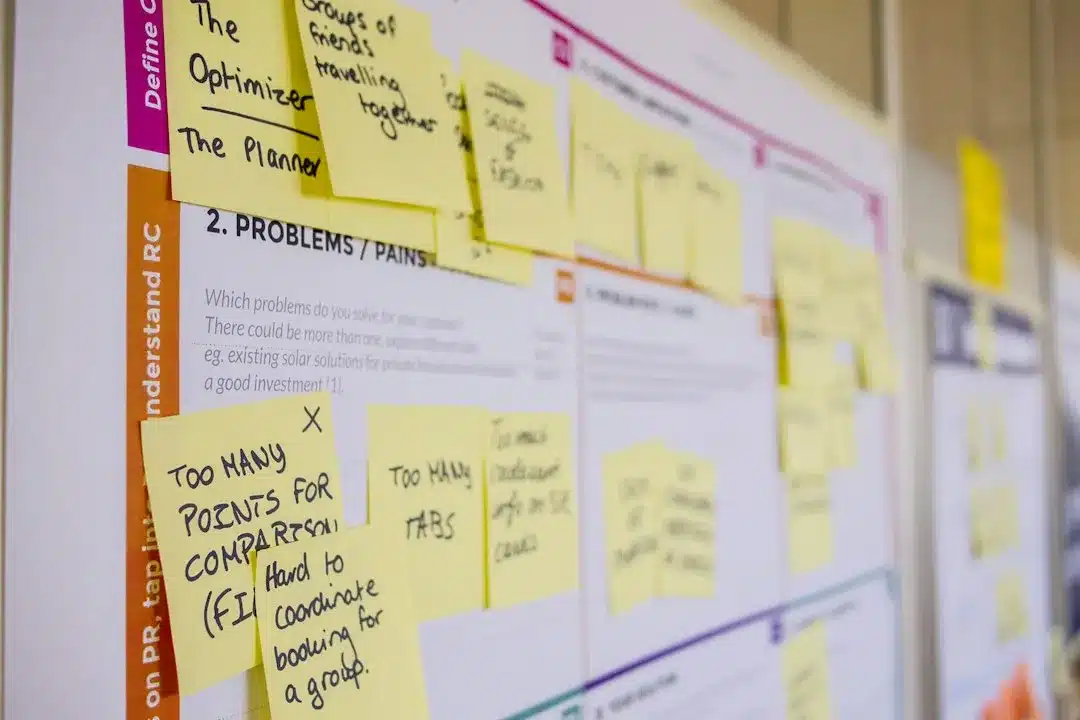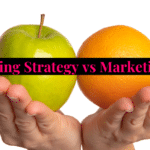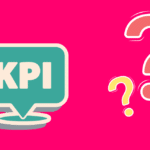In the fast-paced world of marketing, staying ahead of the game means adapting to new trends and strategies. One of the most effective ways to do this is through a concept we call Agile Marketing.
So, what is it?
Agile Marketing is an approach that emphasizes flexibility, collaboration, and continuous improvement in marketing efforts. It involves breaking down projects into smaller, manageable tasks, and using data and customer feedback to make informed decisions and quickly adjust strategies as needed.
By using the Agile Marketing framework, teams can stay nimble, respond to market changes, and deliver high-quality campaigns more efficiently.
Today we’ll discuss the basics of Agile Marketing, its benefits, and how to implement it effectively.
We’ll also share some examples of how companies have successfully used Agile Marketing to drive their business forward.
Let’s rip in (aka get started)!
What is Agile Marketing?

Firstly let’s break down actually what Agile marketing is.
Agile Marketing is a dynamic approach to managing marketing strategies and projects that values collaboration, customer feedback, and rapid iterations. It is based on the principles of Agile software development and Scrum methodology.
Agile Marketing enables teams to be more responsive to change and customer needs, leading to better results and a more satisfying experience for both marketers and consumers.
There are 5 key components to Agile Marketing:
- Cross-functional teams: Agile Marketing teams are made up of individuals with diverse skills and expertise, such as designers, developers, and data analysts, who work together to achieve common goals.
- Iterative and incremental approach: Instead of long-term planning, Agile Marketing focuses on short cycles of work, called “sprints,” typically lasting 1-4 weeks. Teams continuously review and adapt their strategies and tactics based on real-time feedback.
- Data-driven decision-making: It prioritizes the use of data and analytics to inform and measure the success of marketing initiatives. This allows for quicker adjustments and improvements.
- Customer-centricity: Agile Marketing emphasizes the importance of understanding and meeting the needs of the target audience. Customer feedback is continuously collected and used to refine marketing strategies.
- Adaptability and flexibility: It values the ability to respond quickly to changes in the market, consumer behavior, or internal goals. This means being open to new ideas and adjustments throughout the marketing process.
Now, let’s look at the 7 core principles of agile marketing.
7 Core Agile Marketing Principles

Agile Marketing is guided by a set of principles that shape its approach and mindset. These principles, originally outlined by the Agile Marketing Manifesto, serve as a foundation for Agile Marketing practices.
The Agile Marketing Manifesto outlines the following seven principles:
- Validated learning over opinions and conventions: Agile Marketers prioritize learning from real-world data and customer feedback over relying solely on opinions or industry best practices.
- Customer-focused collaboration over silos and hierarchy: Cross-functional teams work closely together, breaking down traditional silos, to deliver customer-centric campaigns and initiatives.
- Adaptive and iterative campaigns over Big-Bang campaigns: Agile Marketers favor smaller, more frequent adjustments and improvements to marketing strategies over large, one-time efforts.
- The process of customer discovery over static prediction: Agile Marketing focuses on continuously discovering and understanding customer needs, rather than relying on static, one-time predictions.
- Flexible vs. rigid planning: Agile Marketing values adaptability and the ability to change direction quickly, even if it means deviating from the original plan.
- Responding to change vs. following a plan: Agile Marketing prioritizes being responsive to changes in the market, customer behavior, or internal goals, rather than rigidly sticking to a predetermined plan.
- Many small experiments over a few large bets: Agile Marketing encourages a culture of experimentation, where teams can test multiple small ideas to learn and improve, rather than relying on a few large, high-risk initiatives.
These principles are the foundation of Agile Marketing and guide teams in their efforts to be more adaptable, customer-focused, and collaborative.
Ok, so you’ve got a good idea of what agile marketing is and how it flows, let’s now look into some of the methodologies behind it.
3 Main Agile Marketing Methodologies Explained
Agile Marketing methodologies provide a structured approach to implementing Agile principles in the marketing process. There are several popular methodologies, each with its own set of practices and techniques.
Some of the most widely used Agile Marketing methodologies include:
1. Scrum

Scrum is a popular Agile Marketing framework that emphasizes teamwork, accountability, and iterative progress. It is based on the concept of “sprints,” which are time-boxed periods (usually 2-4 weeks) during which a team works on a specific set of tasks.
A Scrum involves the following key roles:
- Product Owner: Represents the customer’s needs and priorities, and is responsible for managing the product backlog.
- Scrum Master: Ensures that the Scrum process is followed and helps the team overcome any obstacles.
- Development Team: A cross-functional group of individuals who are responsible for delivering the work.
The Scrum process includes regular sprint planning meetings, daily stand-up meetings, and sprint reviews to assess progress and make any necessary adjustments.
2. Kanban

The Trello Kanban template (above) is super popular and something w’eve used before for specific projects. Its simplicity and effectiveness are what make it so popular, not to mention enjoyable to work with!
A Kanban board is a visual management system that helps teams manage and optimize their workflows. It focuses on maintaining a continuous flow of work and limiting work in progress (WIP).
Kanban boards are used to visualize the status of tasks, with columns representing different stages of the workflow (e.g., to-do, in progress, and done).
Tasks, represented by cards, are moved across the board as they progress through the workflow. The goal of Kanban is to identify bottlenecks, reduce WIP, and improve overall efficiency.
3. Lean

Lean methodology aims to eliminate waste and increase value in the marketing process. It focuses on delivering what the customer wants, when they want it, and in the quantity they want.
The five principles of Lean are:
- Specify value: Understand what the customer values and focus on delivering that.
- Identify the value stream: Map out the steps involved in delivering value and identify any wasteful activities.
- Create flow: Streamline the process to minimize delays and hand-offs.
- Establish pull: Align production with customer demand to avoid overproduction.
- Seek perfection: Continuously improve processes to eliminate waste and increase efficiency.
Overall Lean marketing emphasizes the importance of reducing waste, improving speed, and optimizing the customer experience.
We’ve gone through the methodologies and principles, and now let’s look at the “frameworks” built into the agile approach.
Agile Marketing Frameworks
 In addition to methodologies, Agile Marketing also utilizes frameworks to help guide teams through the process of managing marketing strategies and projects. Some popular Agile Marketing frameworks include:
In addition to methodologies, Agile Marketing also utilizes frameworks to help guide teams through the process of managing marketing strategies and projects. Some popular Agile Marketing frameworks include:
1. Agile Marketing Manifesto

The Agile Marketing Manifesto is a set of values and principles that guide Agile Marketing practices. It is based on the Agile Manifesto for software development and emphasizes the following four values:
- Responding to change over following a plan
- Rapid iterations over Big Bang campaigns
- Testing and data over opinions and conventions
- Collaboration over hierarchy and silos
The Agile Marketing Manifesto serves as a foundation for Marketing teams to prioritize flexibility, customer-centricity, and collaboration in their work.
2. Lean Canvas
The Lean Canvas is a one-page business model that helps marketers and entrepreneurs quickly identify key aspects of a marketing plan. It includes sections for the problem, solution, unique value proposition, customer segments, channels, cost structure, and revenue streams.
The Lean Canvas allows teams to focus on the essential elements of their marketing strategy and iterate quickly as they gather feedback and make adjustments.
3. The Build-Measure-Learn Feedback Loop
The Build-Measure-Learn (BML) feedback loop is a core component of Agile Marketing. It is a continuous cycle that involves building a minimum viable product (MVP), measuring its performance, learning from the results, and then making informed adjustments to the product.
This cycle allows teams to quickly test ideas, gather data, and refine their marketing strategies based on real-world feedback.
Ok, so you know all about the world of agile marketing, but why bother?
What are the benefits?
Let’s explore them.
The Benefits of Agile Marketing

Some of the key benefits include:
- Adaptability: Agile Marketing enables teams to respond quickly to changing market conditions, customer needs, or internal priorities.
- Efficiency: By breaking down projects into smaller, manageable tasks, Agile Marketing helps teams work more efficiently and deliver results in a shorter timeframe.
- Customer-Centricity: Agile Marketing focuses on understanding and meeting the needs of the target audience, leading to more effective campaigns and better customer satisfaction.
- Collaboration: It encourages cross-functional teams to work together, fostering better communication and collaboration.
- Continuous Improvement: Ultimately it prioritizes data-driven decision-making and regular feedback, allowing teams to learn and improve over time.
- Risk Mitigation: By testing ideas and making small, incremental changes, Agile Marketing helps reduce the risk of large, costly marketing failures.
Overall, Agile Marketing offers a more flexible, customer-focused, and efficient approach to marketing, leading to better results and a more satisfying experience for both marketers and consumers.
Ready to apply agile marketing to your current or next business adventure?
Read on my friend.
Agile Marketing Best Practices

To implement Agile Marketing successfully, it’s essential to follow the below
- Start small: Begin by implementing Agile Marketing in a single team or on a specific project before scaling up to the entire marketing organization.
- Cross-functional teams: Form teams with a diverse range of skills and expertise to encourage collaboration and a holistic marketing approach.
- Regular retrospectives: Hold regular meetings to review the team’s progress, discuss what went well, what didn’t, and how to improve in the future.
- Data-driven decision-making: Base your marketing decisions on real-time data and customer feedback rather than opinions or assumptions.
- Embrace change: Be open to making adjustments as you go, even if it means deviating from the original plan.
- Continuous learning: Encourage a culture of experimentation and learning, where teams can test new ideas, gather data, and make informed adjustments.
By following these best practices, you can set your team up for success in Agile Marketing and reap the benefits of a more adaptable, customer-focused, and efficient approach to marketing.
Common Misconceptions About Agile Marketing

There are some common misconceptions about Agile Marketing that can make it seem daunting or impractical. Let’s address a few of them to clear up any confusion:
- Agile Marketing is only for tech companies: While Agile Marketing has its roots in the software industry, it has been successfully adopted by a wide range of companies, including those in retail, healthcare, finance, and more.
- Agile Marketing is only for large teams: Agile Marketing can be beneficial for teams of all sizes, from small startups to large corporations. It’s all about adapting the principles and practices to fit your team’s needs.
- Agile Marketing means no planning: Agile Marketing does involve less upfront planning than traditional marketing, but it still requires setting goals, creating a roadmap, and prioritizing tasks.
- Agile Marketing is chaotic: While Agile Marketing encourages flexibility and adaptability, it is not a free-for-all. The framework provides structure and guidelines to help teams work more efficiently.
By understanding these misconceptions and the truths behind them, you can see that Agile Marketing is a practical, adaptable, and effective approach that can benefit you and your business.
So, how do you implement best practices ASAP and not waste any time?
Read on.
How to Implement Agile Marketing in Your Organization

Implementing Agile Marketing in your organization requires a structured approach to ensure a smooth transition.
Here are some steps you can follow to get started:
1. Leadership Buy-In
First, ensure that your leadership team is on board with the idea of Agile Marketing. They need to understand the benefits and be willing to support the necessary changes.
2. Training and Education
Provide training and education for your marketing team so they can understand the principles and practices of Agile Marketing.
3. Create a Cross-Functional Team
Assemble a cross-functional team that includes members from different marketing disciplines, such as content, design, and analytics.
4. Set Clear Goals
Establish clear, measurable goals for your Agile Marketing efforts, and make sure the team understands them.
5. Start Small
Choose a pilot project or campaign to test out Agile Marketing methods before scaling up to larger initiatives.
6. Embrace Continuous Improvement
Encourage your team to learn from their experiences and make ongoing adjustments to their processes.
By following these steps, you can begin to implement Agile Marketing in your organization and reap the benefits of a more adaptable, customer-focused, and efficient approach to marketing.
Let’s look at some real-world examples of which businesses are using this concept.
Examples of Agile Marketing in Action
Many companies have successfully adopted Agile Marketing principles and practices to improve their marketing efforts. Here are some examples of big business using them:
- HubSpot: This inbound marketing company uses Agile Marketing to continuously improve its campaigns and strategies. Hubspot now has more than 194,000 using their platform! Massive!
- Sprint: The telecom company uses Agile Marketing to quickly respond to customer needs and market changes.
Sprint is famous for constantly implementing new tech to gain an advantage over its competitors and offer its customers a better experience. - Intel: The technology giant uses Agile Marketing to test new ideas, gather data, and make informed adjustments to its marketing strategies.
- Red Bull: The energy drink company uses Agile Marketing to adapt to changing consumer preferences and market trends.
These examples show how Agile Marketing can be applied in a variety of industries and organizations to improve marketing efforts and achieve better results.
Agile Wrap Up
Agile Marketing is a powerful and adaptable approach that can help your marketing team become more responsive, customer-focused, and efficient.
Furthermore, by embracing the Agile Marketing mindset, you can better navigate the ever-changing marketing landscape and deliver campaigns that truly resonate with your target audience.
The best part? Whether you’re a small startup or a large corporation, Agile Marketing can provide the structure and flexibility needed to stay ahead of the curve.
So, go ahead and start your Agile Marketing journey – you’ll be amazed at how it can transform your marketing efforts for the better!
If you’d like to learn more about the latest trends in agile marketing, check out the video below:
Frequently Asked Questions
How is Agile Marketing different from traditional marketing?
Agile Marketing differs from traditional marketing in its approach to planning, execution, and feedback. In Agile Marketing, plans are fluid and continuously evolving based on real-time data and customer feedback, while traditional marketing often relies on more static, long-term plans.
What are the key features of an Agile Marketing team?
An Agile Marketing team is characterized by its ability to quickly adapt to change, work collaboratively in cross-functional teams, and prioritize data-driven decision-making.
What are some popular Agile Marketing tools?
There are several Agile Marketing tools available, including Trello, Asana, and Jira for project management; Google Analytics for data analysis; and HubSpot for inbound marketing. Each tool serves a specific purpose in helping Agile Marketing teams work more efficiently and effectively.
Can Agile Marketing be used in other industries?
Yes, the Agile Marketing methodology can be applied to other industries beyond marketing. Many organizations in fields such as software development, project management, and product design have adopted Agile principles to improve their processes and outcomes.
How does Agile Marketing benefit a business?
Agile Marketing offers several benefits to a business, including increased adaptability to market changes, improved collaboration among teams, better responsiveness to customer needs, and a more efficient use of resources.
What are the stages of Agile Marketing?
The stages of Agile Marketing typically include planning, execution, review, and adaptation. These stages are carried out in short cycles, called sprints, which allow for rapid learning and adjustments.










